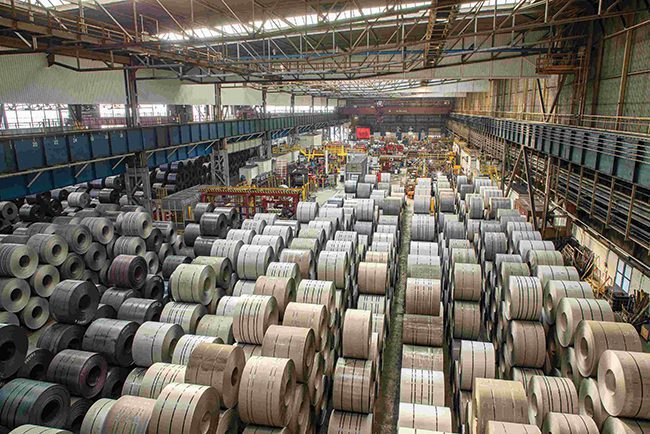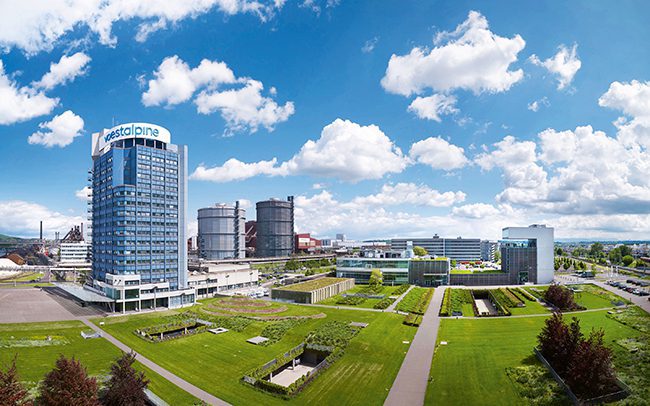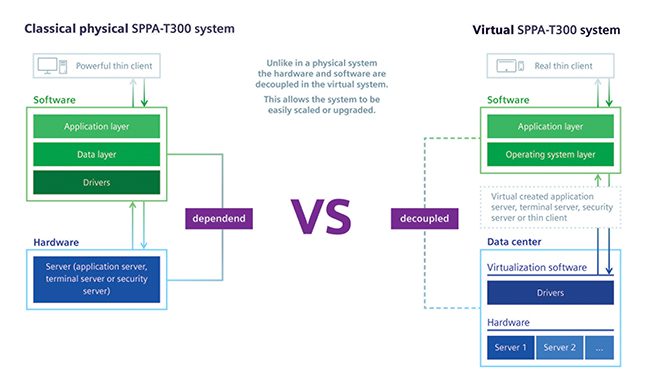Experiencing the Power of Virtualization
While virtualization has been a trend in the information technology sector for some time, it is also becoming increasingly attractive for operational technology. An Austrian steel producer therefore decided to rely on a virtualized control system while modernizing its power plant controls and is enthusiastic about the numerous advantages of the technology.
As one of Europe’s leading steel producers, voestalpine Stahl GmbH, a subsidiary of voestalpine AG, operates a state-of-the-art fully integrated steel mill in Linz, Austria. The plant processes several tons of steel strip and heavy plate every year (Figure 1). To do this, it needs much power and heat, which is partly provided by a 35-MW gas turbine. High-performance power plant control technology is essential for ensuring the turbine’s targeted and efficient operation and convenient operability. When the existing control technology became obsolete, the company decided early in 2021 to carry out a complete control system modernization.
 |
|
1. Steel production at voestalpine. Courtesy: voestalpine Stahl GmbH |
Constantly Shortening Lifecycles
When selecting the right operational technology, power plant operators today face the challenge that the lifecycles of hardware and software are becoming ever shorter. Whereas, in the 1990s, it was still possible to plan for lifecycles longer than 10 years, today they have been reduced to just a few years, and even faster development cycles are expected. As a result, enormous reinvestments may become necessary over time.
Another challenge is that customers must keep spare parts on hand for the various hardware components, and many components must be patched and tested individually on a regular basis. This ties up capital and human resources and has a negative impact on cash flow and operating costs. This is prompting operators to rethink their hardware and software strategies. One solution that offers a remedy for all these issues is to virtualize a plant’s operations and control technology.
Aware of ever-shortening lifecycles, voestalpine Stahl decided from the outset that a virtualized power plant control system should be part of the instrumentation and control (I&C) system modernization. On the one hand, the company reckoned that the maintenance and servicing of the various hardware platforms needed to ensure system availability would lead to increasingly high costs for asset and spare parts management. On the other hand, more frequent updates or upgrades to the system software, which could become necessary due to increasingly complex cybersecurity requirements, for example, would be much easier and less costly to implement. Moreover, the company already had a data center at its Linz site for its in-house information technology and parts of the operating technology for steel production, providing ideal conditions for using a virtualization solution for the gas turbine’s control technology.
“Converting to virtualized control technology for our gas turbine was absolutely the logical step for our state-of-the-art steel plant,” said Harald Rehberger, group coordinator EMSR Power Plant at voestalpine Stahl (Figure 2). “It was clear to us that this solution would not only save us costs in the long term but would also considerably simplify many things in the future.”
 |
|
2. voestalpine AG in Linz, Austria. Courtesy: voestalpine Stahl GmbH |
Implementation of a virtualized version of the Siemens Energy control system in voestalpine Stahl’s existing virtualization infrastructure was the ideal solution for the company. The solution is based on innovative virtualization techniques in collaboration with VMware, the world market leader in virtualization. A modern, virtual hardware environment is created by using virtualization software installed in the data center.
Physical Versus Virtual Setup
In a classic physical system installation, different layers are placed on top of each other on a single piece of hardware starting with the drivers, followed by the data layer, and the application layer. If the hardware is to be replaced with a newer version, the software for each of the three layers must be updated separately—and on each individual piece of hardware. In a virtual system, however, the data and application layers are based on a virtual machine, while the drivers are part of the virtualization software, which is the first layer on the hardware.
The virtualization software is also known as a hypervisor and virtually recreates the hardware to the virtual machine. It provides the link between actual hardware (the data center) and virtual machine (the control technology). The virtual machine is therefore no longer directly dependent on the hardware (Figure 3). If a hardware component is replaced in this system, only the virtualization software must be reinstalled, while the data and application layers can be transferred unchanged.
 |
|
3. Design of a virtual control system compared to a classical physical control system. Courtesy: Siemens Energy |
For voestalpine Stahl, this resulted in a significant simplification in terms of hardware and software lifecycle management. In addition, system administration is greatly simplified because everything can be managed from a central point, the data center. Hardware dependency is significantly reduced, and the system can be easily scaled. Service and maintenance work can also be carried out much more easily and quickly.
Complete Replication with Installed Server Landscape
A virtualized control system, therefore, makes sense both for modernization projects and for new power generation units. In the case of modernization projects, the virtual control system can also be set up on the existing hardware, provided it isn’t too outdated.
For the virtualization of the power plant control system, all components that are typically used in the Siemens Energy control system—from the application server to the terminal and security servers to the thin clients—are virtualized in the data center and made available as a virtual machine. If existing hardware is used to set up the virtual control technology, there is no visible difference for the customer. The virtualized control technology will later be operated via real thin clients, which are used to control the virtualized thin clients in the data center that have the necessary system performance. Again, there is no visible difference.
However, the requirements for the real thin clients are much lower, since they are only used for “remote control” of the actual thin clients. As a result, they can also be replaced quite easily. Likewise, commercially available tablet computers can also be used as thin clients, allowing the system to be operated regardless of location. A running session can be continued on another thin client.
One of the biggest advantages of virtualizing a power plant control system is that customers become much more flexible with hardware. Both existing hardware and new hardware can be used, or both can be combined, because hypervisors are used to replicate the hardware needed for the control technology. This makes a lot of things much easier for customers. Another advantage is that the commissioning time is reduced from several days to a few hours, because the entire virtualized system can be set up and tested in advance at an offsite location.
Management from a Single Point
For voestalpine Stahl, the decision to use virtualized control technology has resulted in a simpler and better overview, since the entire system can be managed from a single point. All virtual machines are displayed in the data center user interface and can be configured there. System performance can also be monitored there at any time, and backups can easily be created for quickly restoring the complete system in the event of an emergency.
“This results in massive improvements and simplifications in our handling of the system,” said Rehberger. “One of the main arguments in favor of the Siemens Energy control system, in addition to the hardware-independent solution, was the simplified lifecycle management,” he added.
A customer choosing a virtual control system today can easily make a major upgrade in two or four years without having to first make any substantial change to the hardware. And if the data center’s performance is no longer sufficient, it can be easily scaled up with additions. This ensures significant cost benefits.
Overall, the initial cost of deploying a virtualized control system is admittedly slightly higher than that of a conventional system because of the added cost of virtualization software. However, when considering the entire lifecycle of a power plant, which is typically about 20 years, there are significant cost benefits.
Customers are increasingly asking whether virtualized I&C is going to be the new standard in the power industry and for industrial power plants. While it’s impossible to predict the future, virtualization will be an important topic going forward because it brings great advantages. Some plant operators will certainly consider such a solution in the future.
Besides choosing this innovative control technology modernization, voestalpine Stahl is also working with Siemens Energy on innovative hydrogen projects aimed at reducing carbon dioxide emissions in steel production.
—Timo Belfiore is solution manager for Service Controls and Digitalization at Siemens Energy.